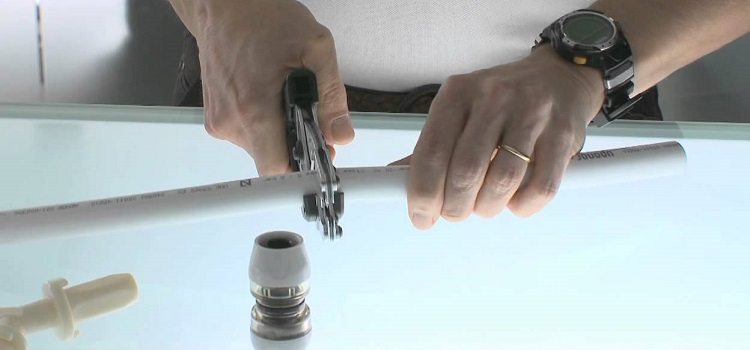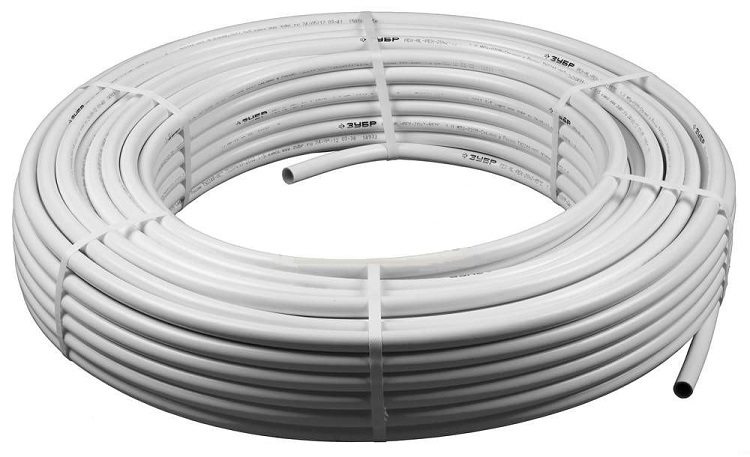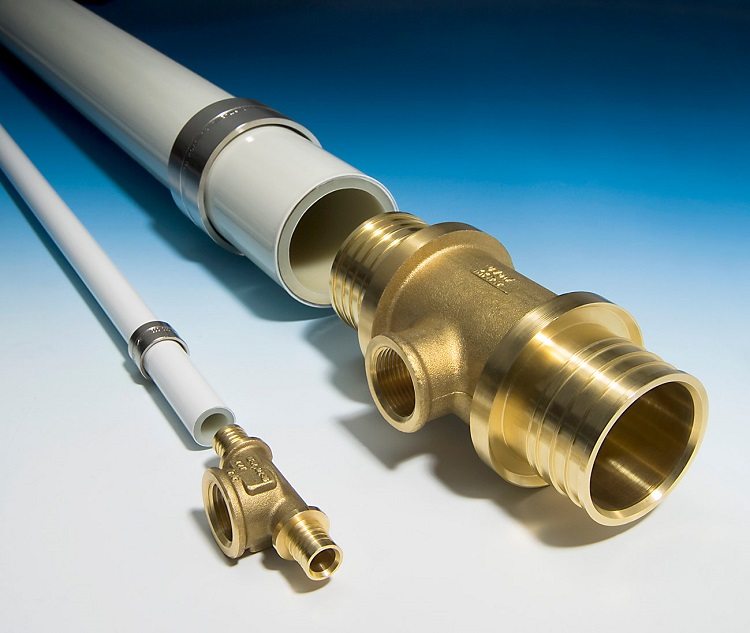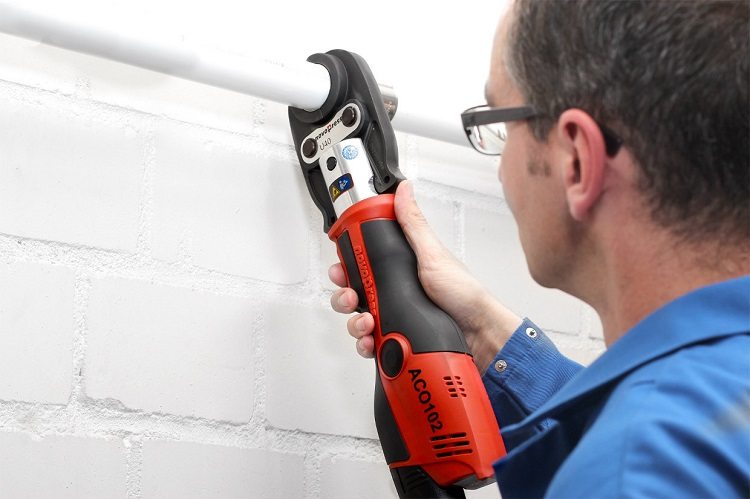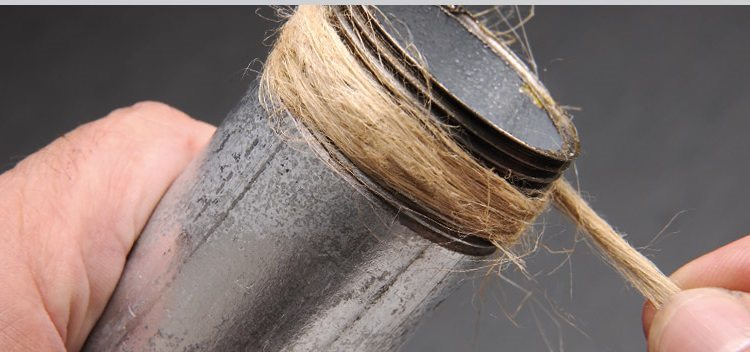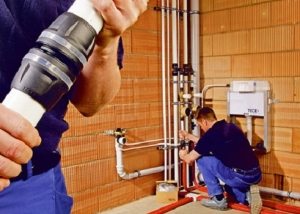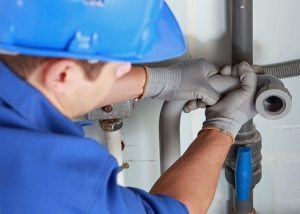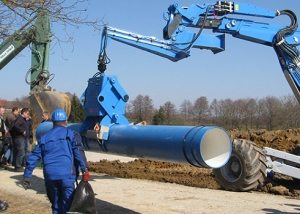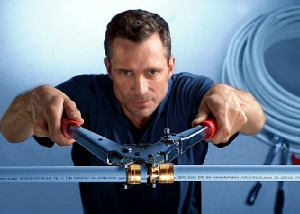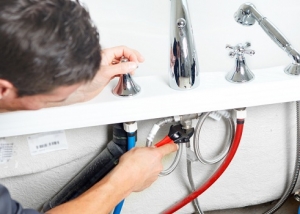It is irrational to hire specialists in the installation of a water supply system based on pipes made of metal, supplemented with two layers of plastic, when it is quite realistic to make high-quality connections of metal-plastic pipes with your own hands. Pipes are connected by special fittings, which are divided into two main families - compression, based on press washers, and sliding fittings.
Content
Design and properties of metal-plastic products
Plastic pipes were created as an alternative to the outdated metal communications system. With your own hands, a created water supply or heating system based on plastic pipes, if all the conditions for proper mounting, and there are no defective press washers, operated for a long time.
The basis of the metal-plastic system is an aluminum pipe, supplemented by two layers of cross-linked polyethylene (internal and external), between the pipe and the layers of polyethylene there are two layers of special glue. According to the international classification, pipes are designated by the abbreviation PEX - AL - PEX, and can easily withstand operating pressures of up to 10 bar and the temperature of the fluid carried up to 95 degrees Celsius.
Important! Plastic pipes from different manufacturers have different operational values. The higher the tolerance in the manufacture of the pipe, the lower its cost will be, and, accordingly, reliability. During installation, it is customary to use fittings of the same manufacturer for fastening pipes to each other.
Plastic pipes are also used in hot and cold water supply, heating systems.
How to connect a metal-plastic pipe with your own hands. Mounting Features
Installation of the system is in many ways similar to the connection of polypropylene or metal pipes, with the difference that welded joints are not used in this case. It is advisable to maintain the geometry of straight lines when assembling the system, although if necessary, these pipes can be bent. Bend metal pipes correctly and not to damage their structure will help a special tool - pipe bender.
All joints of metal-plastic pipes are implemented using fittings, after the stage of preparatory work. Pipes are prepared after careful calculation of the configuration of the future plumbing or heating system, having precisely determined the necessary number of transitional and connecting elements - fittings.
In order to properly connect metal pipes, a set of tools is needed. For different types of connections, it will require those that best fit the fittings used.
To decide how to connect metal-plastic pipes to each other, it is necessary to build on the overall project budget and the purpose of the system. For a simple water circuit, the simplest methods are used: the pipes are interconnected using self-clamping fittings.For a system of type "warm floor" it is advisable to use crimp press - couplings.
Set of installer tools for working with different fittings:
- pipe cutter - it is used by professional installers to cut pipes to the desired length. It is a special tool for trimming polypropylene, polyethylene and plastic pipes. Due to the wide cutting blade and the lever unit for transmitting force from the tool handles, the cut is smooth, this is important for any method of joining metal-plastic pipes. Do-it-yourself installation time is significantly reduced;
- a pair of spanner wrenches, with their help clamping fittings for metal-plastic pipes are mounted, moreover, one key is used as a retainer, and the second is convenient to work with the clamping nut;
- An open-end wrench or adjustable wrench will be used when connecting the metal-plastic circuit to the metal pipe. In this case, the connection is realized by special fittings, supplemented by threaded connections;
- in the set of tools of a professional installer there is sure to be a so-called “gauge” - they can check the correctness of the cut of pipes of various diameters, and chamfer the inner surface of the cut pipe. Without this, the correct and reliable connection for a metal-plastic pipe cannot be achieved;
- an instrument called an “expander” is able to expand the inner diameter of the pipe in case of one-piece connection;
- a massive but necessary pipe bender is also an indispensable attribute of a craftsman who is used to assembling a system of metal-plastic pipes correctly and quickly;
- crimping pliers. An exceptionally professional and expensive tool, it is used for the press connection of metal-plastic pipes, namely, the pressing of crimping press washers on the fittings. There are two types: manual and hydraulic pliers. There is a special template in the delivery set to check the geometry and quality of the joints;
- press for sliding fitting can also be with manual or hydraulic drive.
The tool used for installation differs in quality depending on the manufacturer. It is logical that professional tools are high-quality components for long-term use.
Important! To know how to connect metal-plastic pipes correctly, if there is a need for DIY assembly, you need to study the installation rules for various fittings, and clearly observe the assembly sequence.
Some craftsmen replace the pipe cutter with a conventional hacksaw for metal. But in this case, the cut may turn out to be uneven, which will affect the quality of the connection.
Installation sequence
To know how to connect metal-plastic pipes correctly, if you need to do it yourself, you need to study the rules for installing various fittings, and clearly follow the assembly sequence:
- At the initial stage, two problems need to be solved: which metal-plastic pipe to use and how to connect the elements of the pipeline. Purchased items are subject to a thorough inspection. Check their integrity, the absence of damage to the outer layer. The pipe is being prepared for installation. A pencil marks the place of the future cut. The pipe is cut to the desired size.
- The caliber tool processes the edge of the cut. This operation is carried out for joints of any type, for clamping and mounting using a press fitting.
- The union nuts are put on the pipe, then the o-rings, and then the fittings are inserted - this is how the compression-type connection is mounted.
- In the case of working with sliding fittings, the compression washer is first put on, then the cut edge of the pipe is processed with an expander and a fitting is installed.
A pair of wrenches is used to tighten the compression joints, the crimp sleeve is seated using special pliers. The template checks the quality of the compression of the press coupling, repeated use of the clamping tool can lead to cracks and damage to the pipe structure, which will significantly reduce the time of trouble-free operation. Press jaws are used to connect with a sliding washer, and it is preferable to use a hydraulic tool.
It is impossible to calculate in advance which joints of metal-plastic pipes are better, which will be more reliable during operation. Much depends on the level of skill of the installer, the quality of the fittings and compliance with the installation sequence. The ambient temperature is also important; installation at low temperatures is not recommended.
Important! TOak sto join metal-plastic pipes should be decided in advance, and materials should be purchased with a small margin. Indeed, if there is no experience in such work, there is a risk of spoiling the product.
A system of metal-plastic pipes: how to connect it to a metal segment
When connecting to an existing system based on metal pipes or to the terminals of a water boiler, it is necessary to use a special coupling with a threaded connection. Initially, the coupling is mounted directly on the metal part of the system, supplemented by a threaded connection.
As a sealant, a classic combination of two components is used - tow and paint. A thin layer of tow soaked in paint is wound on a metal pipe along the thread. Next, the coupling is wound. After the paint dries up - for this it is necessary to wait a certain period of time - on the other side of the fitting, a metal-plastic pipe is mounted. The mating part of the fitting can be with a press coupling or with a sliding washer.
Polypropylene pipe connection
Knowing the features of combined mounting, the features of metal-plastic pipes, how these products are connected, how they are attached to walls and insulated to prevent condensation, it is easy to realize a high-quality connection between a metal-plastic pipe and a polypropylene one.
A special fitting will help, which is initially soldered to the polypropylene pipe, and then the metal-plastic pipe is mounted by compression (press washer) or by sliding.
